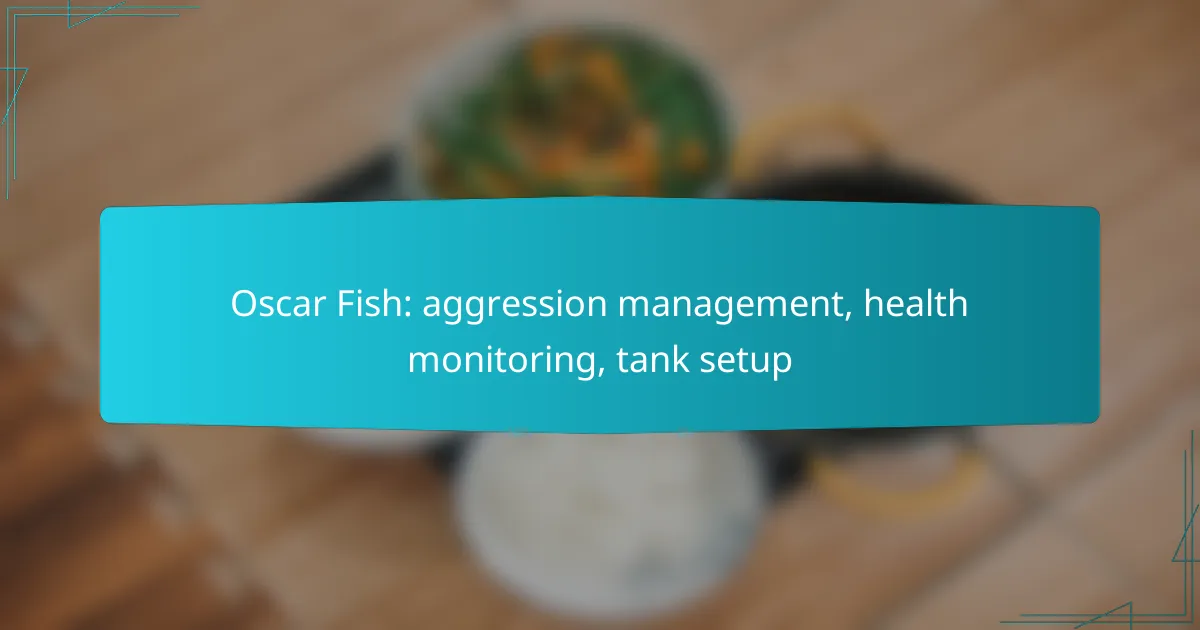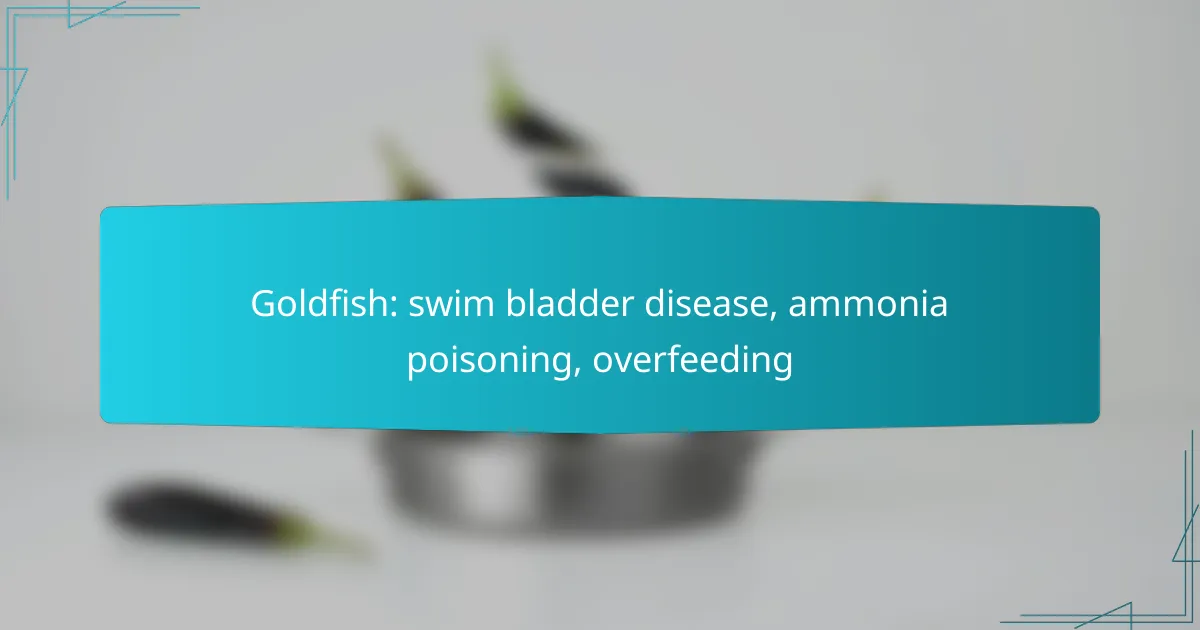Guppies are vibrant and popular aquarium fish, but they require careful attention to prevent diseases and manage stress effectively. By maintaining a clean environment and monitoring water quality, you can significantly reduce the risk of illness in your guppy population. Additionally, understanding common health issues and creating a comfortable habitat are essential for ensuring their well-being and successful breeding.

How to prevent diseases in guppies?
Preventing diseases in guppies involves maintaining a clean environment, monitoring water quality, and ensuring proper care. By following specific practices, you can significantly reduce the risk of illness in your guppy population.
Regular water quality testing
Regular water quality testing is essential for preventing diseases in guppies. Test for parameters such as pH, ammonia, nitrites, and nitrates at least once a week to ensure they remain within safe ranges.
Use reliable test kits and adjust water conditions as needed. For instance, a pH level between 6.8 and 7.8 is ideal for guppies, while ammonia and nitrite levels should be at zero.
Vaccination options
Currently, there are limited vaccination options specifically for guppies, as most fish diseases are managed through environmental control and treatment. However, some aquarists explore preventive medications that can help boost fish immunity.
Consult with a veterinarian or an aquatic specialist to discuss available treatments that may serve as preventative measures against common guppy diseases.
Quarantine new fish
Quarantining new fish is a crucial step in disease prevention for guppies. Isolate new arrivals in a separate tank for at least two weeks to monitor for signs of illness before introducing them to the main aquarium.
This practice helps prevent the spread of potential pathogens and allows you to treat any issues that may arise without affecting your established guppy population.
Maintain optimal tank conditions
Maintaining optimal tank conditions is vital for the health of guppies. Ensure the water temperature remains between 24°C and 28°C (75°F to 82°F) and provide adequate filtration and aeration.
Regularly perform partial water changes, ideally 10-20% weekly, to keep the environment clean and reduce stress on your fish.
Use of medicated food
Using medicated food can be an effective way to prevent diseases in guppies. Certain medicated diets are designed to boost fish immunity and combat common ailments.
Incorporate these foods into your feeding routine, especially during stressful periods such as breeding or after introducing new fish. Always follow the manufacturer’s instructions for dosage and duration of use.

What are the common diseases affecting guppies?
Guppies are susceptible to several diseases that can affect their health and lifespan. Understanding these common diseases is crucial for effective prevention and treatment.
Ich (Ichthyophthirius multifiliis)
Ich, or white spot disease, is caused by a protozoan parasite that infects guppies, leading to white cysts on their skin and gills. This condition can cause significant stress and can be fatal if not treated promptly.
To prevent Ich, maintain stable water conditions, including temperature and pH levels. If an outbreak occurs, raising the water temperature slightly and adding aquarium salt can help eliminate the parasite.
Fin rot
Fin rot is a bacterial infection that causes the edges of guppy fins to fray and decay. Poor water quality and stress are common contributors to this disease.
To prevent fin rot, ensure regular water changes and monitor water parameters. If fin rot is detected, treat with antibacterial medications and improve tank conditions to promote healing.
Velvet disease
Velvet disease, caused by the parasite Oodinium, results in a velvety appearance on the guppy’s skin and can lead to respiratory issues. This disease thrives in poor water conditions and can spread quickly among fish.
To combat velvet disease, increase aeration and temperature in the tank. Treatment often involves copper-based medications, but it’s essential to follow the dosage instructions carefully to avoid harming the fish.
Columnaris
Columnaris is a bacterial infection that manifests as white or gray patches on the skin and fins of guppies. It can be triggered by stress, poor water quality, or injury.
Preventing Columnaris involves maintaining clean water and reducing stress factors. If symptoms appear, antibiotics can be effective, but early intervention is key to preventing severe outbreaks.

How to manage stress in guppies?
Managing stress in guppies is essential for their health and well-being. Stress can lead to various health issues, so creating a comfortable environment is crucial.
Provide hiding spots
Hiding spots are vital for guppies as they offer security and reduce stress. You can use plants, rocks, or commercial decorations to create these safe spaces in the aquarium.
Ensure that the hiding spots are distributed throughout the tank to allow all guppies access. This setup helps them feel secure and encourages natural behaviors.
Maintain stable water parameters
Stable water parameters are crucial for reducing stress in guppies. Regularly check temperature, pH, and ammonia levels to keep them within safe ranges, typically around 24-28°C for temperature and a pH of 6.8-7.8.
Frequent water changes and using a reliable water conditioner can help maintain these parameters. Sudden changes can shock guppies, leading to increased stress and health problems.
Avoid overcrowding
Avoiding overcrowding is essential for managing stress in guppies. A general rule is to allow about one inch of fish per gallon of water, which helps ensure adequate space for swimming and reduces competition for resources.
Overcrowding can lead to territorial disputes and increased waste, both of which elevate stress levels. Monitor your tank’s population and consider upgrading to a larger tank if necessary.
Use gentle filtration
Using gentle filtration is important for guppies, as strong currents can cause stress. Choose a filter designed for smaller fish or one with adjustable flow rates to create a calm environment.
Consider using sponge filters or those with a low flow setting. This approach helps maintain water quality without disturbing the guppies’ habitat, allowing them to swim comfortably.

What are the signs of stress in guppies?
Signs of stress in guppies can manifest through various behavioral and physical changes. Recognizing these signs early can help prevent serious health issues and improve the overall well-being of your fish.
Faded colors
One of the most noticeable signs of stress in guppies is faded colors. Healthy guppies typically display vibrant hues, but stress can cause them to lose their brightness, making them appear dull or washed out. This change can be a response to poor water quality, inadequate nutrition, or aggressive tank mates.
To address this issue, regularly check water parameters such as pH, ammonia, and nitrite levels. Ensuring a balanced diet with high-quality flakes or pellets can also help restore their colors.
Erratic swimming behavior
Erratic swimming behavior is another key indicator of stress in guppies. You may observe them darting around the tank, swimming in circles, or staying near the surface. Such behavior often suggests that the fish are feeling threatened or uncomfortable in their environment.
To mitigate this, provide ample hiding spots with plants or decorations, and ensure that the tank is not overcrowded. Monitoring interactions with other fish can also help identify potential stressors.
Hiding excessively
Excessive hiding is a common sign that guppies are stressed. While guppies may occasionally seek refuge in plants or decorations, constant hiding can indicate that they feel unsafe or are overwhelmed by their surroundings. This behavior can stem from high noise levels, aggressive tank mates, or unsuitable water conditions.
To alleviate this stress, create a more secure environment by adding more plants or shelters. Additionally, maintaining a calm atmosphere and reducing disturbances can encourage your guppies to feel more secure and confident in their habitat.

How to breed guppies successfully?
To breed guppies successfully, provide a suitable environment and ensure optimal conditions for mating and raising fry. Key factors include tank setup, water quality, and appropriate nutrition.
Optimal tank setup
Creating an optimal tank setup is crucial for breeding guppies. A minimum of 10 gallons is recommended for a breeding pair, with plenty of hiding spots using plants or decorations to reduce stress.
Maintain a stable water temperature between 24°C and 28°C, and ensure the pH level is between 6.8 and 7.8. Regular water changes, around 10-20% weekly, help keep the environment clean and healthy.
Consider using a breeding box or net to separate pregnant females from the main tank, allowing fry to grow without being eaten. This setup can improve survival rates significantly.










